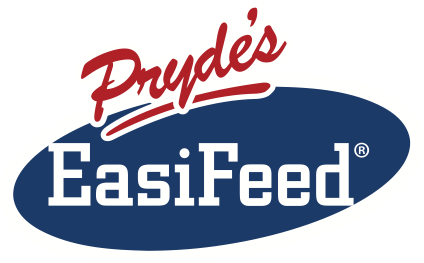Dr Nerida Richards
Preparing a yearling for sale revolves around getting them to look the best they possibly can on the day to attract and impress the buyer. Coat shine, muscling, topline and condition are all critical pieces in the preparation puzzle and feeding plays a major role in achieving the look you want. So what types of feeds and supplements will do the job for you?
Coat Shine
Good quality protein and oils with both Omega 3 and Omega 6 fatty acids are brilliant at achieving coat shine. Feeds like full fat soybean, cold pressed canola oil, sunflower seeds and flaxseed oil are useful supplements for encouraging coat shine. Ensuring your horses vitamin and mineral requirements are met is also essential to bring out coat shine and rich coat colour.
Muscling and Topline
For a horse to build muscle and topline they must have high quality protein as building blocks and energy to put the protein together to form muscle (just as a bricklayer must have the bricks and the personal energy to build a wall).
The quality of the protein fed is extremely important. Protein quality is determined by the amino acid profile. In general, the higher the level of essential amino acids (which include lysine, methionine and threonine) in a source of protein, the higher the quality of protein. High quality protein can be found in soybean, canola meal, lupins and faba beans. Soybean is considered the ‘Rolls Royce’ in protein and is used extensively in sales preparation diets.
While feeding protein is important, it is useless unless you give the horse the energy (calories) to put it all together and build muscle. For horses in sale preparation, energy digestibility is of paramount importance. Excellent sources of energy (calories) include extruded cereal grains, oils and non-grain energy sources like beet pulp, lupin and soybean hulls. Grain derived feeds like rice bran are also useful in the diet of horses being prepped.
Condition
While coat shine and muscling are very important, it is the final bit of body condition that finishes the package off. While the amount of condition you put on your horses is a matter of personal preference it is important not to put too much condition on a horse, especially a weanling or yearling. Having them at a stage where you can’t see their ribs but can feel them easily is generally considered to be a healthy amount of condition for a young horse.
Putting body condition on a horse simply comes down to providing calories in excess of their maintenance needs so they have some leftover to lay down as body fat. Again, it is important that the energy (calorie) sources you use are very digestible. Feeding poorly digested feeds like whole or cracked grains means you will have to feed more to put on the same amount of body condition, and may also mean you cause problems like loss of appetite, colic and laminitis.
The amount you need to feed to condition your horse will depend on your individual horse’s body type and the amount of work it is doing during prep. Typically fillies need much less feed than colts and you have to be careful not to feed them too much as they can become too heavy in condition (fat) very quickly. On the other hand a highly strung colt doing a decent amount of work in preparation for sale may need a lot of feed to put on the desired amount of condition. You should condition score horses every week at a minimum to determine how much body condition they are carrying and if they need their feed increasing (if they aren’t putting on enough condition) or decreasing (if they are putting on too much condition).
The best ‘conditioning’ sources of energy include extruded cereal grains, oils, non-grain energy sources like lupin hulls, soybean hulls and beet pulp and grain derived feeds like rice bran and wheat pollard.
It is all in the balance
While understanding which types of feeds do what in a show or sale prep diet is handy, all these components need to be put together in a balanced way to ensure the horse gets each feed component in the right proportions. Feeding too much protein and not enough calories will result in an expensive diet that won’t put condition on a horse, while feeding too little protein and too many calories results in an overweight and poorly muscled horse.
In addition, a vitamin or mineral deficiency in the diet can prevent your horse from gaining weight, building muscle or achieving the coat shine you want. Of course the diet also needs to contain plenty of forage. It can’t be stressed enough how important diet balance is! Without balance you won’t get the results you want.
To ensure you are feeding a balanced diet you have a couple of options. You can feed a pre-prepared feed that is designed specifically for horses in or sale preparation. If you are not a pre-prepared feed person, you can put together your own diet using the ingredients mentioned above with a good quality vitamin and mineral supplement.
And finally …
Taking a horse from the paddock to the sale ring is a rewarding but somewhat challenging task. While feeding is only one of the components that will help you get your horse ready it is one of, if not the most important one. Use the help provided in this article and the assistance offered by feed companies like Pryde’s Pty Ltd to put together a balanced prep diet that will bring out the best in your horses.
Pryde’s EasiFeed Thoroughbred Yearling Preparation Diets
For full details on these diets or a custom diet formulation of diets for your specific circumstances, contact Pryde's EasiFeed on 1300 732 267.

